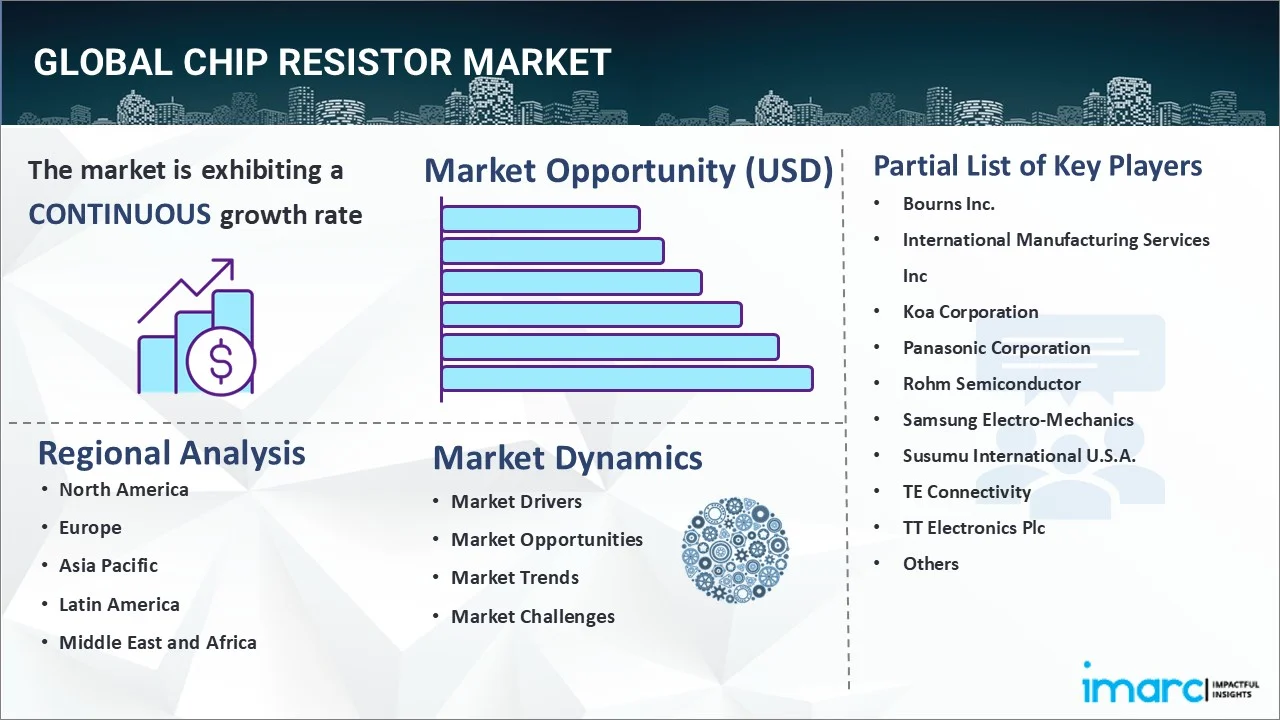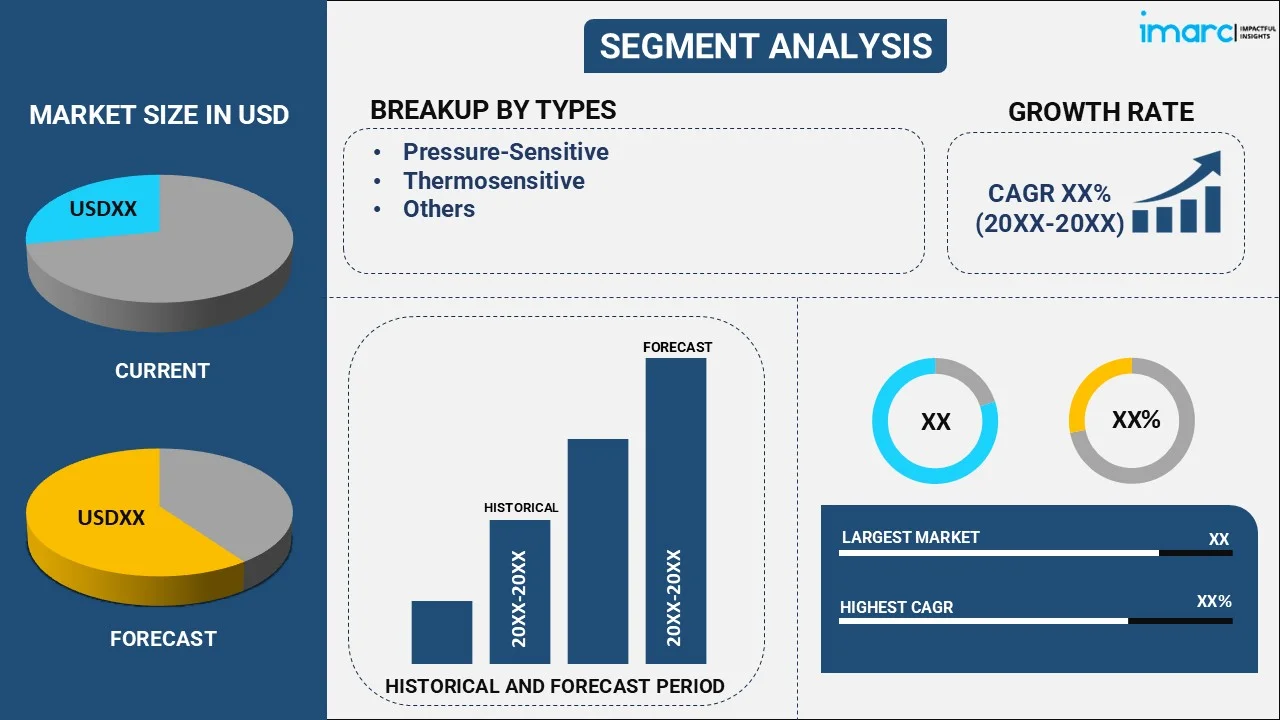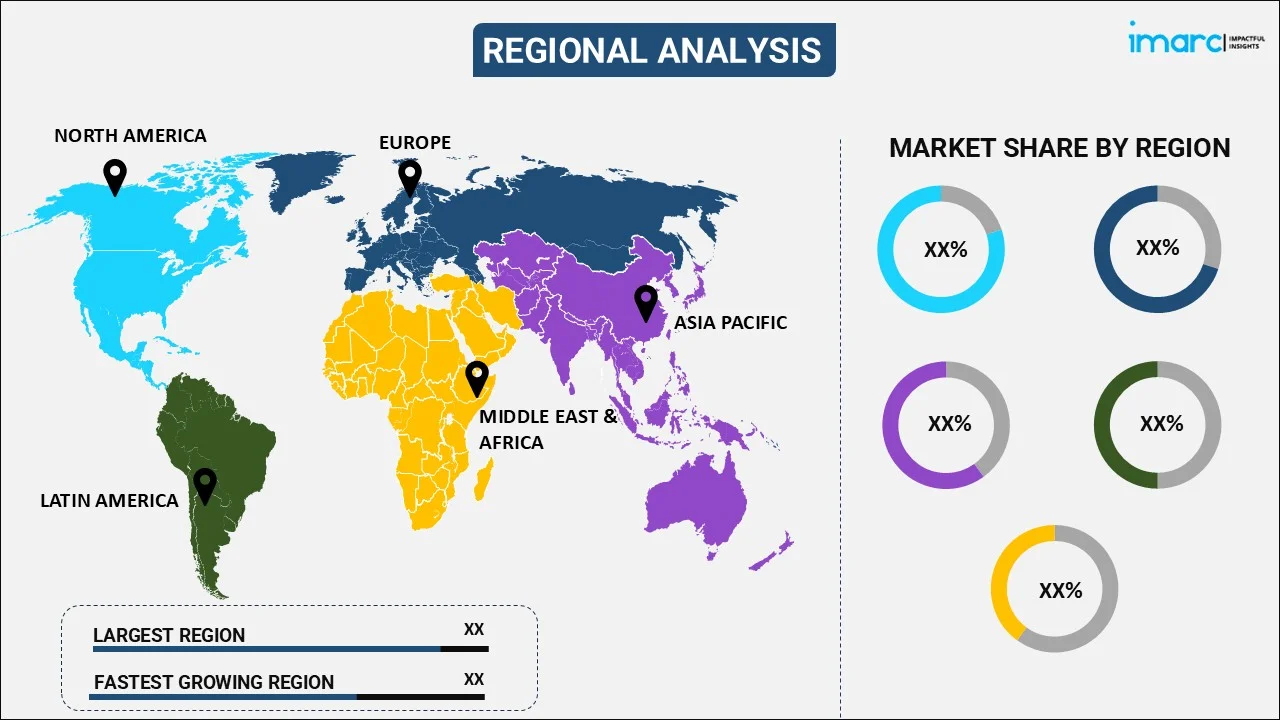
Chip Resistor Market Report by Type (Pressure-Sensitive, Thermosensitive, and Others), Technology (Thick Chip Resistors, Thin Chip Resistors, and Others), End Use (Automotive and Transportation, Consumer Electronics, Industrial, IT and Telecommunication, and Others), and Region 2025-2033
Chip Resistor Market Size:
The global chip resistor market size reached USD 1,251 Million in 2024. Looking forward, IMARC Group expects the market to reach USD 1,921 Million by 2033, exhibiting a growth rate (CAGR) of 4.9% during 2025-2033. The market is primarily driven by the emerging trend of miniaturization for high-precision components in electronics, increasing demand for high-power resistors in electric vehicles, and constant improvements in thick and thin film technologies, enhancing performance, durability, and reliability across applications.
|
Report Attribute
|
Key Statistics
|
|---|---|
|
Base Year
|
2024
|
|
Forecast Years
|
2025-2033
|
|
Historical Years
|
2019-2024
|
| Market Size in 2024 | USD 1,251 Million |
| Market Forecast in 2033 | USD 1,921 Million |
| Market Growth Rate (2025-2033) | 4.9% |
Chip Resistor Market Analysis:
- Major Market Drivers: According to the chip resistor market forecast, the market is primarily driven by the rising demand for small electronic devices, ongoing progress in car electronics, and the increasing use of the Internet of Things (IoT) technology. Growing investments in telecommunications infrastructure and the thriving consumer electronics sector are also contributing to the consistent growth in the market.
- Key Market Trends: Surface mount technology, high-reliability resistors, and the miniaturization of electronic components are the leading trends in the market, in response to the growing demand for robust and portable electronics. Additionally, improvements in thermal stability, performance gains, and material innovations are driving the market demand, particularly in industries where accuracy is essential.
- Geographical Trends: The market is dominated by Asia-Pacific due to its robust electronics manufacturing sector. On the other hand, the development in other regions, including North America and Europe, is being driven by advances in automotive and aerospace technologies.
- Competitive Landscape: Bourns Inc., International Manufacturing Services Inc., Koa Corporation, Panasonic Corporation, Rohm Semiconductor, Samsung Electro-Mechanics, Susumu International U.S.A., TE Connectivity, TT Electronics Plc, Viking Tech Corporation, Vishay Intertechnology Inc., and YAGEO Group are among the prominent market players in the industry. To improve their market position and satisfy industry-specific demands, these businesses are concentrating on innovation, product differentiation, and strategic mergers.
- Challenges and Opportunities: Some of the challenges in the market include fluctuating raw material costs, the complexity of manufacturing miniaturized components, increasing competition from alternative resistor technologies, and supply chain disruptions which can have an impact on pricing and production. However, growing demand for advanced electronics throughout the automotive and aerospace are expected to create lucrative opportunities in the market, as per the as per the chip resistor market analysis report.

Chip Resistor Market Trends:
Miniaturization and High Precision Components
The increasing focus on product miniaturization and the development of high-precision components is one of the most recent developments in the chip resistor market. Smaller resistors with superior precision and performance are more in demand due to the electronic devices getting smaller and more sophisticated. This tendency is especially important in industries where space constraints are critical, such as consumer electronics, automotive, and telecommunications. Manufacturers such as Samsung is leading this ongoing shift by developing ultra-small chip resistors, including their LPDDR5X DRAM chips, which offer improved thermal management, faster processing, and enhanced artificial intelligence (AI) capabilities. The chips are 9% thinner than prior Samsung DRAM 12 nm units and offer around 21% improved heat resistance.
Increasing Usage of High-Power Resistors
As renewable energy technologies and electric vehicles (EVs) gain popularity, the augmenting need for high-power chip resistors keeps increasing. These resistors are vital for managing high voltage and current loads in automotive power systems, battery management systems (BMS), traction inverters, and DC-DC converter circuits, contributing to effective energy use. Due to their dependability, high-power resistors are favored by leading manufacturers as they improve operating efficiency even in the face of extreme climatic circumstances. For EV automakers, the focus on components that provide improved performance and longevity in power management systems also augments the adoption of these rapidly growing technologies.
Advancements in Thick and Thin Film Technologies
The market analysis highlights ongoing developments in thick and thin film resistor technologies and offers a thorough analysis of demand across important sectors. Since even small performance variations can cause serious disruptions in crucial industries such as the medical, aerospace, and communication sectors, thin film resistors, which are prized for their exceptional precision and stability, are indispensable. On the other hand, thick film resistors provide reliable and affordable solutions, which renders them perfect for applications involving power supplies, automobiles, and industries where cost and durability are critical. Prominent corporations are setting themselves apart by optimizing these resistors to meet the unique requirements of multiple end-use industries. These innovations enable tailored solutions, meeting demands for both accuracy and long-term reliability, thereby driving growth in the market.
Chip Resistor Market Segmentation:
IMARC Group provides an analysis of the key trends in each segment of the market, along with forecasts at the global, regional, and country levels for 2025-2033. Our report has categorized the market based on type, technology, and end use.
Breakup by Type:

- Pressure-Sensitive
- Thermosensitive
- Others
The report has provided a detailed breakup and analysis of the market based on the type. This includes pressure-sensitive, thermosensitive, and others.
Breakup by Technology:
- Thick Chip Resistors
- Thin Chip Resistors
- Others
Thick chip resistors hold the largest share of the industry
A detailed breakup and analysis of the market based on the technology have also been provided in the report. This includes thick chip resistors, thin chip resistors, and others. According to the report, thick chip resistors accounted for the largest market share.
Thick chip resistors constitute the biggest market share due to its cost-effectiveness, durability, and broad use in many electronic applications. Industries that need strong performance in a variety of environmental conditions and high-power dissipation favor these resistors. Thick film technology is in high demand in consumer electronics, automotive, and industrial equipment due to its mass production capabilities and comparatively simpler and less expensive manufacturing method. Thick chip resistors also meet a variety of industry needs with their high tolerance and wider resistance range. Their adaptability to managing higher power loads and their capacity to function in challenging conditions, including extremely high or low humidity, further cemented their market supremacy. These factors contribute to their extensive adoption across various sectors, creating a positive market outlook.
Breakup by End Use:
- Automotive and Transportation
- Consumer Electronics
- Industrial
- IT and Telecommunication
- Others
Consumer Electronics represents the leading market segment
The report has provided a detailed breakup and analysis of the market based on the end-use. This includes automotive and transportation, consumer electronics, industrial, IT and telecommunication, and others. According to the report, consumer electronics represented the largest segment.
Due to the quick development and broad use of personal electronics such as computers, tablets, smartphones, and wearables, the consumer electronics sector makes up majority of the market share. These resistors that are specifically designed to fulfil the power management and thermal needs of these goods are becoming increasingly crucial as the demand for more functional, compact, and energy-efficient gadgets increases. Producers are responding to consumer demands for smarter, more connected devices with more performance possibilities by integrating chip resistors that offer enhanced accuracy, reliability, and lifetime. Games consoles, entertainment systems, and smart home appliances are some of the other products driving this industry's growing demand. The need for chip resistors has also increased as a result of the augmenting adoption of the Internet of Things' (IoT), since consumer electronics depend increasingly on these parts for effective data processing and connectivity.
Breakup by Region:

- North America
- United States
- Canada
- Asia-Pacific
- China
- Japan
- India
- South Korea
- Australia
- Indonesia
- Others
- Europe
- Germany
- France
- United Kingdom
- Italy
- Spain
- Russia
- Others
- Latin America
- Brazil
- Mexico
- Others
- Middle East and Africa
Asia-Pacific leads the market, accounting for the largest chip resistor market share
The report has also provided a comprehensive analysis of all the major regional markets, which include North America (the United States and Canada); Europe (Germany, France, the United Kingdom, Italy, Spain, Russia, and others); Asia Pacific (China, Japan, India, South Korea, Australia, Indonesia, and others); Latin America (Brazil, Mexico, and others); and the Middle East and Africa. According to the report, Asia-Pacific represented the largest regional market for chip resistor market.
Asia-Pacific region's strong position in the worldwide market can be attributed to the presence of robust electronics manufacturing sectors in nations such as South Korea, Japan, and China. The economical and effective production of electronic components, such chip resistors, is made possible by the presence of extensive supply chains and sizable manufacturing facilities. Furthermore, the need for chip resistors across a variety of applications is being driven by the growing adoption of cutting-edge technologies such as 5G, AI, and IoT in various countries. There is an increasing demand for high-quality electronic components due to the growth of the automotive industry, particularly the electric vehicle industry in the region. Skilled labor, government support, and investments in research and development (R&D) all contribute to Asia-Pacific's dominance in chip resistor market.
Competitive Landscape:
- The market research report has also provided a comprehensive analysis of the competitive landscape in the market. Detailed profiles of all major companies have also been provided. Some of the major market players in the chip resistor industry include Bourns Inc., International Manufacturing Services Inc, Koa Corporation, Panasonic Corporation, Rohm Semiconductor, Samsung Electro-Mechanics, Susumu International U.S.A., TE Connectivity, TT Electronics Plc, Viking Tech Corporation, Vishay Intertechnology Inc. and YAGEO Group.
(Please note that this is only a partial list of the key players, and the complete list is provided in the report.)
- Strategic acquisitions, product differentiation, and innovation are becoming increasingly essential concerns for market leaders seeking a competitive advantage and meeting the particular needs of various industries. The companies are creating sophisticated resistors to meet the increasing needs of consumer electronics, automotive, and telecommunications industries due to their innovation-focused approach. The outstanding accuracy, dependability, and performance of these resistors are well known. Product differentiation makes their products stand out in a crowded market and allows them to offer customized solutions. Companies are also leveraging new technologies to improve their supply chains and increase their market presence through smart mergers and acquisitions. Through sustained worldwide market position and long-term growth, these initiatives enable them to address the changing requirements of various industries.
Chip Resistor Market News:
- July 24, 2024: Vishay Intertechnology launched the CHA series of AEC-Q200 qualified thin film chip resistors, offering high-frequency performance up to 70 GHz for automotive, space, telecom, and military applications. These compact resistors provide low internal reactance and stability, making them ideal for ADAS, LIDAR, space communication, military systems, drones, and RF antennas. The resistors come with S-parameter data and 3D models for electronic simulation and are RoHS-compliant and halogen-free.
- April17, 2023: The assets of Riedon Inc., including its production facilities in Tecate, Mexico, and Alhambra, California, were acquired by Bourns, Inc. through its subsidiary, BE Services Company, Inc. This calculated acquisition expands Bourns' well-established resistor product line by including Riedon's wide array of resistive solutions, which are renowned for their durability and dependability in harsh conditions.
Chip Resistor Market Report Scope:
| Report Features | Details |
|---|---|
| Base Year of the Analysis | 2024 |
| Historical Period | 2019-2024 |
| Forecast Period | 2025-2033 |
| Units | Million USD |
| Scope of the Report | Exploration of Historical Trends and Market Outlook, Industry Catalysts and Challenges, Segment-Wise Historical and Future Market Assessment:
|
| Types Covered | Pressure-Sensitive, Thermosensitive, Others |
| Technologies Covered | Thick Chip Resistors, Thin Chip Resistors, Others |
| End-Uses Covered | Automotive and Transportation, Consumer Electronics, Industrial, IT and Telecommunication, Others |
| Regions Covered | Asia Pacific, Europe, North America, Latin America, Middle East and Africa |
| Countries Covered | United States, Canada, Germany, France, United Kingdom, Italy, Spain, Russia, China, Japan, India, South Korea, Australia, Indonesia, Brazil, Mexico |
| Companies Covered | Bourns Inc., International Manufacturing Services Inc, Koa Corporation, Panasonic Corporation, Rohm Semiconductor, Samsung Electro-Mechanics, Susumu International U.S.A., TE Connectivity, TT Electronics Plc, Viking Tech Corporation, Vishay Intertechnology Inc., YAGEO Group, etc. |
| Customization Scope | 10% Free Customization |
| Post-Sale Analyst Support | 10-12 Weeks |
| Delivery Format | PDF and Excel through Email (We can also provide the editable version of the report in PPT/Word format on special request) |
Key Benefits for Stakeholders:
- IMARC’s industry report offers a comprehensive quantitative analysis of various market segments, historical and current market trends, market forecasts, and dynamics of the chip resistor market from 2019-2033.
- The research report provides the latest information on the market drivers, challenges, and opportunities in the global chip resistor market.
- The study maps the leading, as well as the fastest-growing, regional markets. It further enables stakeholders to identify the key country-level markets within each region.
- Porter's five forces analysis assists stakeholders in assessing the impact of new entrants, competitive rivalry, supplier power, buyer power, and the threat of substitution. It helps stakeholders to analyze the level of competition within the chip resistor industry and its attractiveness.
- The competitive landscape allows stakeholders to understand their competitive environment and provides insight into the current positions of key players in the market.
Key Questions Answered in This Report
The global chip resistor market was valued at USD 1,251 Million in 2024.
We expect the global chip resistor market to exhibit a CAGR of 4.9% during 2025-2033.
The extensive utilization of chip resistors to operate, protect, and control circuits in electronic devices, owing to their excellent stability, high-resistance to temperature, and heat dissipation properties, is primarily driving the global chip resistor market.
The sudden outbreak of the COVID-19 pandemic had led to the implementation of stringent lockdown regulations across several nations resulting in temporary closure of numerous manufacturing units for chip resistor.
Based on the technology, the global chip resistor market has been segmented into thick chip resistors, thin chip resistors, and others. Among these, thick chip resistors currently represent the largest market share.
Based on the end use, the global chip resistor market can be bifurcated into automotive and transportation, consumer electronics, industrial, IT and telecommunication, and others. Currently, the consumer electronics sector accounts for the majority of the total market share.
On a regional level, the market has been classified into North America, Europe, Asia-Pacific, Middle East and Africa, and Latin America, where Asia-Pacific currently dominates the global market.
Some of the major players in the global chip resistor market include Bourns Inc., International Manufacturing Services Inc, Koa Corporation, Panasonic Corporation, Rohm Semiconductor, Samsung Electro-Mechanics, Susumu International U.S.A., TE Connectivity, TT Electronics Plc, Viking Tech Corporation, Vishay Intertechnology Inc., and YAGEO Group.
Need more help?
- Speak to our experienced analysts for insights on the current market scenarios.
- Include additional segments and countries to customize the report as per your requirement.
- Gain an unparalleled competitive advantage in your domain by understanding how to utilize the report and positively impacting your operations and revenue.
- For further assistance, please connect with our analysts.
 Inquire Before Buying
Inquire Before Buying
 Speak to an Analyst
Speak to an Analyst
 Request Brochure
Request Brochure
 Request Customization
Request Customization




.webp)




.webp)












